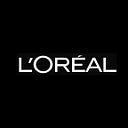The Three Parts of the Hair Follicle
The hair follicle is divided into three segments, each of which plays a key role in the creation of hair
The development, growth and colouration of the hair shaft are the result of intense biochemical and metabolic activity that develops at the root of the hair which, deep within the scalp, forms the hair follicle.
From deep down right up to the surface, several perfectly defined compartments form the follicle: some are of dermal origin (the connective tissue sheath and the dermal papilla) and others of epithelial origin (the outer and inner root sheaths, the hair shaft and the sebaceous gland). The hair follicle is divided into three segments : the infundibulum, the isthmus and the bulb.
The infundibulum: the top of the follicle
Stretching from the surface of the scalp to the opening of the sebaceous canal, the infundibulum is the “cup” out of which the hair follicle grows. Its properties do not vary whatever the stage of the hair cycle. This portion guides the hair shaft and it is from the epithelial sheath of the infundibulum that the shaft becomes detached and totally free. In the upper part of the infundibulum, keratin debris is eliminated, enabling the flow of sebum.
The sebaceous gland: lubricating the hair and skin
The sebaceous gland is consists of a cluster of cells — sebocytes — the sole function of which is to produce sebum. Each of the three types of follicle on the human body have sebaceous glands of varying size and volume:
- the lanuginous follicles, which are found on the torso and limbs and produce a considerable quantity of skin sebum
- the sebaceous follicles, which are only present on the face and upper trunk. Their sebaceous glands are highly developed, which can lead to acne
- the terminal follicles in the armpits, on the scalp and in the beard
The isthmus and pilo-arrector: the mid-section
Stretching from the mouth of the sebaceous canal to the deep insertion of the pilo-arrector muscle, the isthmus is surrounded by a sheath of connective tissue.
As for the pilo-arrector muscle, one of its extremities is attached deep down to the hair follicle by a little bulge, while the other is located in upper part of the dermis. When it receives a signal from the nervous system it contracts, making the hair stand on end and slightly raising the skin on the scalp.
The bulb: where it all begins
Finally, at the base of the follicle, below the muscle insertion, is the bulb, which houses both the dermal papilla and the hair matrix.
Located 4 mm below the the scalp’s surface, the dermal papilla, is highly developed during hair’s growth phase. It represents an area of connective tissue that is infolded within the hair matrix that surrounds it. Tiny blood vessels nourish the hair, acting as the follicle’s motor. It takes the form of a low-density oval body which secretes a significant extracellular matrix synthesized by the connective cells known as fibroblasts.
Fibroblasts: making connections
These cells are elongated in appearance and their cytoplasm contains vacuoles. The basic substances which they synthesize express markers such as the enzyme alkaline phosphatase, the anti-apoptotic regulator protein Bcl-2 and the enzyme type 1 cyclo-oxygenase. Staining with alcian blue or toluidine blue indicates the presence of non-sulphated glycosaminoglycanes such as hyaluronic acid and sulphated ones such as chondroitin-sulphate.
The connective tissue sheath is continuous with the dermal papilla and forms an envelope that surrounds the follicle. It is synthesised by fibroblasts and is essentially formed from type I and type III collagen, fibronectin and laminin. Its lower third is crossed by a rich network of blood capillaries and the elastic fibres composing it reach inside the papilla.
The matrix: the hub of creation
In the hair matrix, the dermal and epithelial compartments are separated by a basal membrane composed of type IV collagen, laminins 1 and 5, fibronectin and heparan sulphate.
The deepest epithelial component of the follicle is formed by the hair matrix. This matrix is divided into a deep germinal area, the site of the mitotic activity of the keratinocytes (cell division) and forms a pigmented zone rich in melanocytes situated above the summit of the dermal papilla.
